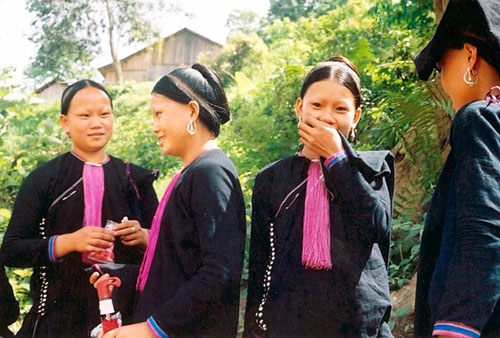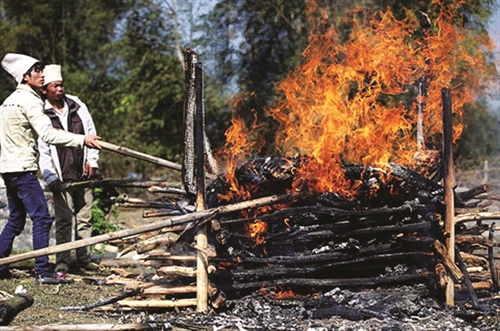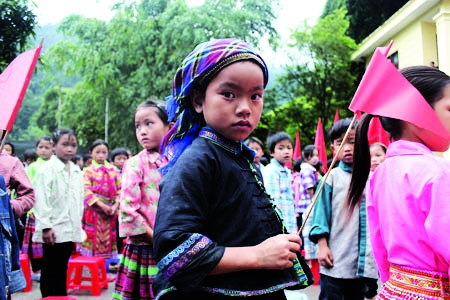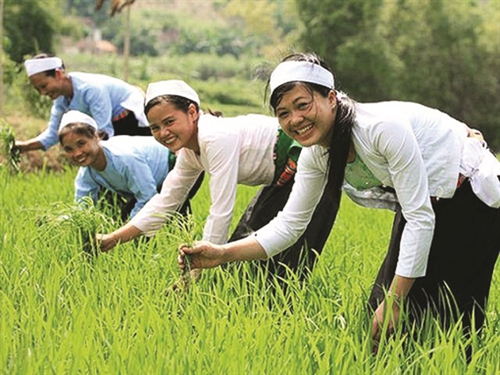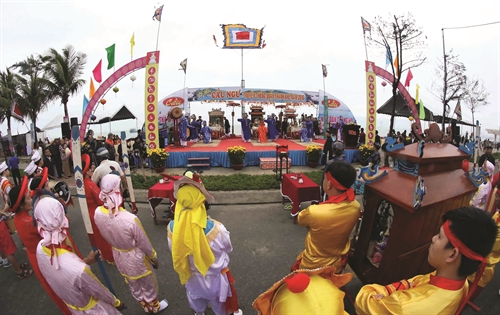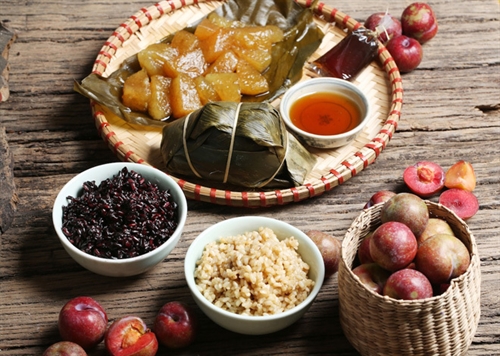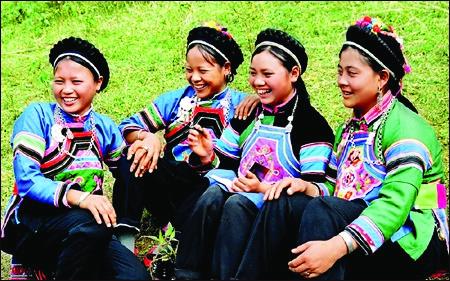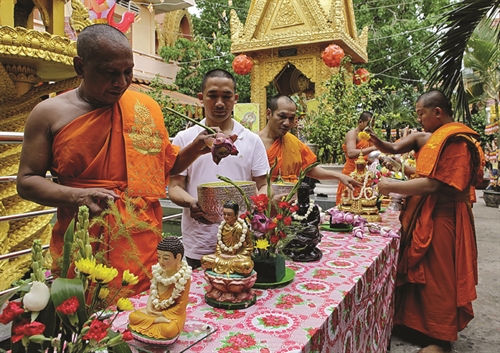>>“Cao Lan-San Chi” ethnic minority: Its customs and practices
>>Marriage customs of the San Chi
>>“Cao Lan-San Chi” ethnic minority: Its customs and practices
Ta Thi Tam
Ethnology Institute
The San Chay live in midland areas in the provinces of Tuyen Quang, Thai Nguyen, Bac Giang, Quang Ninh, Cao Bang, Lang Son, Phu Tho and Vinh Phuc, ranking 14th in population among 54 ethnic groups in Vietnam.
The group’s main source of livelihood is cultivation, growing rice, maize, potato, cassava, pea and vegetables in both lowland and hilly areas. Other sources of food supply come from hunting, picking up forest products, animal breeding and some other trades.
A San Chay village is usually located on a low hill, consisting of tens of houses facing a rice field or a river and leaning against a mountain. This aims to save cultivation land and avoid floods and whirlwinds.
A San Chay stilt-house is divided into two main parts, the front and the back. The left of the front half is the sleeping place of daughters of the family. Next is the sleeping place of elderly people where a stove is placed for warming in winter. At the right side are rooms of married sons. The left side of the back half, which is around 30 cm higher than the floor of the remaining part of the house, is the place where the ancestor altar is set up. The middle part is for receiving guests where elderly people can sleep in summer. The right side is for routine activities of family members and is also the sleeping place of younger sons. Under the stilt house is placed a rice mortar.
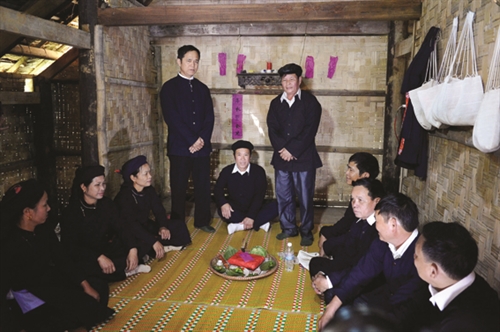 |
| Espousal ceremony of the San Chay (Bac Giang province) __Photo: Thanh Ha/VNA |
In recent years, some San Chay families build wood-frame houses with a concrete roof and brick walls.
The San Chay follow endogamy but marriage among members of the same clan, who are those having consanguineous relationship and worshiping the same ancestors, is strictly forbidden. At present, San Chay people also get married with members of other ethnic groups.
The San Chay believe a happy marriage largely depends on the nativities of the couple. Only those whose horoscopes match are believed to lead a happy married life. Therefore, before their wedding, a couple is supposed to see a diviner who will read their horoscopes to foresee their marriage. If their nativities do not match, the couple is not supposed to get married. Otherwise, their marriage is believed to suffer misfortunes.
Marital rituals of the San Chay include the engagement ceremony, the wedding and the newly-weds’ first visit to the bridal family. The practice of exacting wedding presents remains in the San Chay community but it depends on the financial conditions of both families.
The San Chay love having a big family which must have sons to maintain its continuity. In the past, a San Chay family used to have at least six children, with many families having as many as ten. Nowadays, a family only has two or three children as a result of the government’s family planning policy.
The group has various birth-related ceremonies, including those to pray for gods’ support for the mother’s smooth delivery, good health for the mother and baby, and cure for the child if he gets sick. Under San Chay custom, a pregnant woman is not supposed to attend a funeral or to appear at public places. When her home is renovated, she must invite a shaman to conduct a ritual to move the spirit of the unborn to another place during the renovation period.
A San Chay funeral often lasts two days. If a person dies on a bad date or his family cannot afford a funeral yet, the decedent will be buried first while the funeral will be held later. The mourning period lasts three years, during which mourners only wear white shirts. The group has mourning taboos such as mourners must fast for 40 days, and are not supposed to comb their hair, sleep on the bed and put bowls and chopsticks on food trays during this period.
The San Chay believe helping in a funeral is a way of cultivating virtue and morals for themselves and their descendants. When a San Chay dies, his family will receive help from the community to hold a solemn funeral for the dead, especially from the village shaman who, with his deep understanding about San Chay mourning rituals, will do his best to save the spirit of the dead. A shaman is believed to lose all of his power and magic if he use them for self-seeking purposes.-
